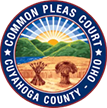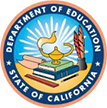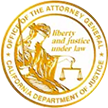Cal Interpreting & Translations (CIT) offers Albanian interpreters and translators with legal, medical and specialty experience, including criminal and civil matters, employee meetings, engineering, patent cases, labor disputes, immigration and more.
Although based in Los Angeles, CIT offers comprehensive Albanian language services including interpretation, translation and transcription, 24 hours a day, 7 days a week, worldwide. Our interpreters and translators are native speakers who have been screened, certified, have provided credentials, field tested, and kept up to date with developments in both English and the Albanian language through means such as lectures, conferences, and travel. CIT’s Albanian language interpreters and translators possess in depth knowledge of the Albanian language, as well as of the culture and history of the Albanian people, allowing them to provide informed and complete interpretation and translation.
The Albanian language, spoken by approximately 5 million people worldwide, is the official language of Albania. Approximately 60% of Albanian speakers reside in Albania. Also known as Gjuha Shqip, the language is spoken by 98% of the country. Albanian is spoken in other countries, such as Turkey, Belgium, Sweden and Ukraine. There are several dialects of the Albanian language, such as Cheg, Arvanitika (spoken in Greece) and Arbereshe (spoken in Italy). The various dialects are spoken all around the world, including the US, Bulgaria, Serbia, Croatia, Kosovo and Macedonia.
The Albanian language is linguistically affiliated with Indo-European, Indo-Iranian and Balto-Slavonic languages and has two main subgroups: Tosk (from the North) and Cheg (from the South).
The official dialect of the language is Standard Albanian. However; Tosk is the basis of Standard Albanian and has been since 1952. The aforementioned dialects were mainly a result of migration in the 13th and 15th centuries. Government, law, administration and education use Standard Albanian as the first language of the country.
The Albanian language itself has both masculine and feminine gender markers. The neutral markers have almost disappeared. The nouns in the Albanian language have both definite and indefinite forms. When adjectives are used, they are placed after the noun they are describing and take up the masculine or feminine form of the noun described. Verbs in the Albanian language come in nine forms: subjunctive, conditional, indicative, admirative, optative, gerundive, imperative, participial and infinitive. Albanian is a subject-verb-object (SVO) language, where subjects are marked with a normative case and usually are in the first position of a sentence.
There is a lot of debate regarding the origin of the Albanian language. Nowadays, the accepted opinion is that Albanian is one of the ancient languages of the Balkan Peninsula, Illyrian. One single sentence found in the Latin “Formula of Baptism,” written in 1492 AD, is the first written record of Albanian. The formation of Standard Albanian, which was the most elaborated form of the Albanian language has gone through an arduous process with writings of the North and the Albanophone regions of Italy, beginning in the 16th and 17th centuries.
In the 19th century, during the Albanian nationalist movement, the process began a new stage. In the times of the National Renaissance, two separate literary forms of the language emerged: the northern and southern forms. Initially, there were attempts to unify the two and bring the language together, particularly with respect to the alphabet. In 1908, in the town of Manastir, the Albanian Congress decided on the new alphabet of the Albanian language to be entirely comprised of the Latin alphabet.
By 1944, there were still two main dialects of the language. Meanwhile in Kosovo, officials attempted to unify the language once more. In 1968, a linguistics conference was held in Prishtina, Kosovo, under the “one nation-one language” idea. In 1972 in Tirana, “Orthography Rules of the Albanian Language” of 1967 was submitted to Congress for discussion. This conference has gone down in history as the unification of the language.


No matter what your needs may be, we can and are ready to assist you now. We have translators and interpreters standing by 24/7.

CIT's interpreter is such a rockstar, and it’s so great to have him as a lead interpreter for our Board meetings. About Our Interpreters 
Thank you for always being able to handle emergency interpreting assignments with ease. About Urgent Requests 
Thank you for always being able to handle emergency interpreting assignments with ease. About Urgent Requests 
Your translation rates are more competitive than other language service providers I used in the past. About Pricing 

Professionalism matters at CIT. We respond to request inside 24 hours.







